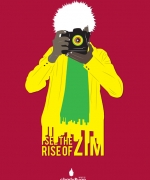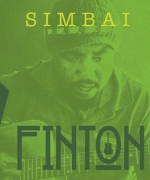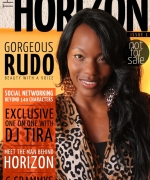Hair Piece (Peace): A multi-strand hair story
The subject of black women and their hair seems to have come under the spotlight lately, particularly with the resurgence of the natural hair movement. Some, like author, Chimamanda Ngozi Adichie claim hair is political. Others, like the late author, poet, dancer, actress, and singer, Maya Angelou, propose that hair is a woman’s glory. Still others like the late journalist and columnist, Shana Alexander, suggest hair is personal. Having had rather too many bad hair days in which hair was neither political or a glory on a personal level, I found myself on a reflective journey trying to figure out what hair is – and isn’t. I ended up chatting with two Zimbabwean women living abroad whose hair stories, along with mine, helped me draw some conclusions.
Every story has a beginning. Hair stories are no exception, so I began by going back to childhood. Lydia, a Zimbabwean living in Washington DC, grew up with short, natural hair. As a girl, I knew girls like Lydia whose cropped hair handled water well but who I thought looked no different from boys. I grew up with my hair in “mabuns,” a simple style my mother could do, but which got scruffy after swimming, even getting undone sometimes resulting in it having to be re-done. This was a problem since it involved pain as one’s hair was pulled, tugged and threaded into obedience. The hairstyle’s name, “Mabuns,” always fascinated me. Maybe it was so called because the square-like tufts at the base of each threaded bunch of hair resembled the edible buns that provided us with endless delight as children. I know; I am struggling for words here. There just aren’t English words for some things that are such an intrinsic part of some of our cultures. Perhaps then, hair is cultural. Certain hairstyles, in fact, are expressions of the beliefs, traditions and practices of some cultures or groups. An example is when dreadlocks worn by Hindu, Buddist, Masaai men and some Rastafarians. Dreadlocks have come to be worn beyond these groups as a fashion statement. Interestingly when this is done they can be subject to stereotyping and even used to stereotype others. I have been in “arty” groups where if you don’t have locks it means you’re not creative – worse, main stream - that you’re not liberated or something too complicated for me to figure out. Fadzi, a health worker in the UK, told me her “dreadlocks” story. Born and raised in Zimbabwe, Fadzi got her hair locked around 2007. A friend had dared her to in 2001 but she’d always been afraid to because of possible professional repercussions.
“They were actually fine while they were short. They were easy to maintain and didn’t provoke much of a reaction. But I let them grow, all the way down my back. That’s when I got problems. I found I had to style them for work otherwise they didn’t look neat. So I kept them in an up-do. But then I began getting tension headaches. And when I was in-between styles, they looked scruffy.” Fadzi finally cut the locks, for health reasons, after six and a half years. Hair, besides being a fashion statement, can be a health issue. I know this from the time my hair fell out after my second pregnancy and other times when I braided my hair once too often, damaging my hairline. I’m thinking also of a friend who lost her hair after chemotherapy and hides her loss under a hat. Fadzi’s loss of hair was simpler leading her to wear her hair natural and short.
“I loved it,” she says but adds that the novelty wore off quickly. I’m reminded of a time when after a career change, I cut my hair, wearing it short and natural for nearly two years. I reveled in the freedom (to swim and shower daily if I wanted to L.O.L), simplicity and lack of expense! But like Fadzi, I got bored and needed something new. Not so for Lydia, who after sixteen years of years of chemical treatment cut her hair.
“The transition...to natural hair began primarily as emotional and then became practical. I had been wearing my treated hair short but no longer with extensions for a year before I finally cut it all off in August 2012, after my dad passed away. It was an emotional journey for me. When I was growing up my Dad always told me how beautiful I looked with my short natural hair and he couldn’t understand why I wanted to treat my hair. So when I finally cut it after he died, it was my small way to remember him. I’ve never looked back and I love it.” So much so that she’s been wearing it that way for three years.
Hair then can be emotional and practical. I’m thinking of the time I moved to South Africa and relocated back to Zimbabwe in a space of eight months. I remember needing to pick myself up. I got a weave and soon afterwards braided my hair, before leaving it in a mid-length, uncombed, spiky style that went with my new carefree approach to life. It was practical as I didn’t have much money to spend on styling too. I was surprised one day when a random man on the street asked me if I didn’t have money to do my hair. I guess that hair can be social. And resource-related! Not only does it cost money to do hair, but there’s the time involved and skill required.
Talking about skill, I remember the giddy days when I was finally allowed to do my hair. No longer was I confined to “mabuns” or the occasional pony tail or puff on civvies day. Gone were the days of the stretching comb. Hair could be treated with chemicals! My mother was tentative, allowing me to get my hair braided just before I turned 17. It helped that my sister quickly acquired the skill to braid so school holidays brought new freedom involving extensions, as we called them then. After I passed my O’levels, my mother allowed me to relax my hair for lower sixth. Price and time were a huge consideration as was the safety and need for maintenance. In those days, we had to keep hair short (even if treated) or tied. We were subject to the greasy hair test and one had to use after-care products which didn’t cause the offensive greasy look. Some might consider testing hair for grease political. Others might argue that it was practical. We, as students, weren’t empowered to complain and it suited some of our parents for us to have hair that wasn’t oily, or expensive to maintain. And in those days, weaves, weren’t allowed in school. Even had they had been, they would have been beyond the reach of our school sized pockets or that of our parents.
Lydia’s experience is similar to mine. “I first got my hair treated in high school in L6,” she says. “I was so excited to get my first curly perm. I’d wanted to put chemicals in it for so many years but my mother wouldn’t let me. She finally relented at the end of high school.” Hair is therefore age-related. Really, it must be. I am thinking about how hard it is for many people to deal with the appearance of grey hair. And now that I am a mother of girls, myself, the age appropriateness of styling and treatment is important to me. I’m reminded of the somewhat controversial film “Good Hair” by Chris Rock. It touches on this as well as the business-side of her which isn’t always ethical.
Fadzi, who currently wears her hair in a weave says she worries about this. According to “Good Hair” some weaves are stolen right off people’s heads in India! To weave or not to weave, hair? That is the question. For Fadzi practical needs outweigh others at present while she’s on the job market. “I’m hoping to secure a job while I’ve got this hairstyle,” she says. Being in the process of growing her hair, which is an awkward length and hard to style right now, makes a weave a good choice for transitioning to her next style. Besides, being a mother of two small children, she argues that ease of maintenance is a priority.
Hair can be a pain! My recent experiences prove it. I recently found myself with short hair with two different textures after cutting my relaxed hair. Lacking the courage to go bold I decided on a weave. Not being a fan of weaves, this was traumatic! I settled on an Afro weave which was quick, easy to maintain, and allowed me to grow my hair underneath. Lydia, however, wants nothing to do with weaves.
“I first started noticed weaves at the end of high school and start of college, in the early 1990’s. Even then there were only a handful of girls using them. I was fascinated by the texture and how they seemed so manageable. By the end of college, I’d had my first weave and I was hooked. I loved the versatility and how I could go from short to long, curly to straight without worrying about my natural hair,” says Lydia. Her love for weaves grew when she moved to the U.S. in 1999 where there was an even wider selection of hair as well as stylists and hairdressers.
“My love affair with hair weaves in the US didn’t last very long because in spite of the wide hair choices, it was also very expensive to do and maintain. In the Washington DC area where I live, hair weaves go for anything between $200 -$350, and this is just the price to weave it in, not the hair,” Lydia says. I’m happy to say my Afro weave cost me a quarter of that price. To some, Afro’s might be the “wrong” texture (you’d have to watch “Good Hair” to catch) but it works for me. This brings me to another thing. Hair is all about choice. And there are many factors that affect one’s choices.
“I guess my choice of hairstyle depends pretty much on what I’m comfortable with at the time and convenience,” Fadzi says. Lydia would agree. “I trim my hair every 6 weeks at a barber when I take my sons for a haircut, and that costs me just $15. The maintenance is easy, I just wash and go. The best part is not having to worry about hair after going to the gym, and to the pool because I can just shampoo and go with no worries of styling.”
Interestingly enough, Fadzi, Lydia and I have all made the choice, at present (I might add), to keep our hair natural. Fadzi says she admires popular figures like Lupita, Lira, Zahara and Chimamanda Ngozi Adichie, who are helping to break some of the prejudice against natural hair. More “natural hair” ambassadors are needed beyond arts and culture, she says. “We need them to turn up in a suit in a business context.” Lydia, for her part, works in international development where diverse races and cultures are represented. She recalls getting many positive responses after her hair cut. “But the best reaction was from my daughter,” she says. “We live in a predominantly white neighborhood and hair is a big issue for her as she tries so hard to fit in. She is dark skinned and she feels like she doesn’t. She hates her thick “kinky” hair. When I went natural, she hated it at first and wanted me to “grow back” my long hair. She now loves the natural look hair and has grown more comfortable wearing her own hair natural instead of braids. Add to that when Lupita Ny’ongo was named ‘People’s most beautiful woman’, I think she became convinced that dark brown women with short natural hair are just as beautiful as women with long silky hair.”
That said, Lydia has reservations about the natural hair movement. I do too. Perhaps it has something to do with elitism. To some, wearing your hair in a natural hair style makes your more authentic, or “better” than other black women who have made different hair choices. It’s as if women in weaves are all worthy of being d
“I feel like it’s become another unnecessary way for us women to judge one another. Whether relaxed, weaved, wigged or natural, we should just strive to be who we are because we are all beautiful,” Lydia says. We all have different stories involving hair types, textures, feelings in a given moment, and a myriad of other influences which all affect our choices.
So what is hair? Is it biological, emotional, practical, social, emotional, cultural, political or economic? Is hair personal or is it your glory or a pain? Perhaps it is one or some or all of these things. Perhaps it is none. Maybe it depends on you and where you are in your story. But here’s the thing; hair is transitory too. So maybe Maya Angelou, who relaxed her hair at 70, was right when she said, “But it is not a bad thing or a good thing, it’s hair.” And that is my conclusion at the end of it all.




